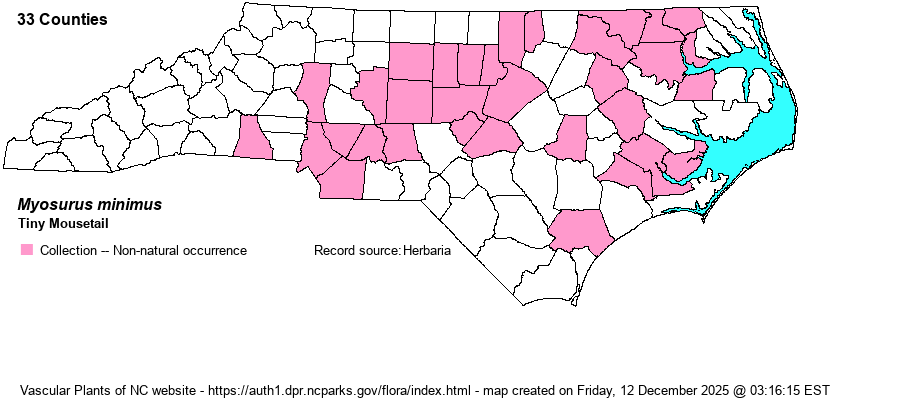| Author | L. | |
| Distribution | Mostly Piedmont and northern Coastal Plain; absent from the Sandhills proper and most of the southern Coastal Plain.
Native of western and midwestern U.S. and southwestern Canada; adventive eastward. Weakley (2018) considers its occurrence in the Southeastern states to be of uncertain provenance, though this website believes it is not native in NC. | |
| Abundance | Formerly infrequent to perhaps locally fairly common in parts of the Piedmont and Coastal Plain, but has apparently declined greatly in recent decades; now rare to uncommon across the state. It can be very easily overlooked if flowers are not seen, but there are very few specimens in recent decades, and iNaturalist contains no NC photos. | |
| Habitat | Fallow crop fields, old fields, river terraces (especially where cleared) -- often where soils are muddy. | |
| Phenology | Flowering and fruiting March-May. Seems to flower infrequently. | |
| Identification | Mousetail is a tiny to small plant less than 6 inches tall. Slender, rather erect leaves form a tuft, with leafless, slender flowering stems a bit taller. Each stem produces a solitary, small white, 5-petaled flower; the fruits form a compact "mouse tail" that gets progressively longer. | |
| Taxonomic Comments | | |
| Other Common Name(s) | | |
| State Rank | SE? | |
| Global Rank | G5 | |
| State Status | | |
| US Status | | |
| USACE-agcp | FACW link |
| USACE-emp | FACW link |

